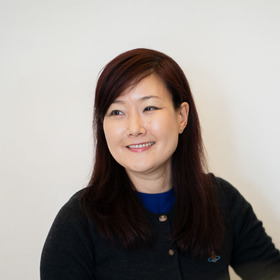After the Yokohama Triennale 2020, 1,000 days Toward the Next
As I am writing this in November 2021, the number of new cases of COVID-19 infection in Japan has decreased so much that it is doubtful whether this article will convey any sense of actuality. At the same time, however, we are hearing news from overseas that some countries are experiencing their worst-ever outbreak of the virus, and it seems that the battle against COVID-19 is not exactly a situation in which we can be optimistic.
The Yokohama Museum of Art, where I work, is currently closed for a long period of time starting in March 2021 for a large-scale renovation of the building. Although it is often asked whether the museum was closed because of the COVID-19 pandemic, large-scale renovation of a public facility is not an overnight decision, and the construction work, which had been planned since several years ago, just happened to coincide with this period. I think it is worth mentioning that the museum is actually doing a lot of work while it is closed, such as moving artworks from the collection to an outside warehouse, sorting through more than 40 years of accumulated materials from the time of the preparation room, and updating systems and policies in preparation for the reopening of the museum, but this is a digression from the theme – the challenges at the age of living with COVID-19 – so I would like to write about the Yokohama Triennale, which I was involved in last year as well as in the preparations for the next one.
Backstage at the Museum's Great Migration at Yokohama Museum of Art
(Production: EducationDepartment, Yokohama Museum of Art; Camera and Edit: Masanobu Nishino)
The Yokohama Triennale, an international exhibition of contemporary art held every three years since 2001 in Yokohama, was held it’s seventh edition from July to October 2020, after the first wave of the COVID-19 outbreak had somewhat subsided. Although the opening of the exhibition was delayed by two weeks from the original schedule, it was one of the earliest international exhibitions to open during the COVID-19 pandemic, as many international exhibitions, such as the Venice Biennale of Architecture, had to be postponed or canceled.
Yokohama Triennale 2020 archive video, produced by Organizing Committee for Yokohama Triennale (Many other videos are available on the Yokohama Triennale YouTube channel.)
Perhaps what is of interest is why the decision was made to hold the event and how it was possible. There are several clear reasons for this.
The first reason is the Tokyo Olympic Games 2020. Considering the impact of the Olympics, which were originally scheduled to be held in the second half of July 2020, the City of Yokohama planned to bring forward the Yokohama Triennale from July to October instead of the usual period of August to November. This was in the hope of attracting people coming to Tokyo for the Olympics, but also in the hope that the opening would take place before social activities were delayed due to the Olympics. Therefore, because of the possibility that the transportation of artworks for the exhibition and the supply of materials for the installation of artworks might be delayed due to the increased logistics and construction related to the Olympics, we started making inquiries to transportation and construction companies in the second half of 2019, which was earlier than usual.
Even before the COVID-19 pandemic began, in anticipation of the unpredictable situation of the Olympics (there were even plans to have traffic restrictions around the venue for the torch relay on the day before the originally scheduled preview, that is, the last day of installement), preparations were made earlier than usual, so that by the end of February 2020, only one group of artists who needed to come to Japan for a preliminary visit to the venue before producing their new work for the exhibition would be left. Therefore, by the time the first state of emergency declaration was issued in Japan, we had transportation and construction arrangements in place to a certain extent, and we had estimated that 70% of the artworks would be ready in time. At the time of the state of emergency declaration, we informed all participating artists that we would proceed with preparations for the opening of the exhibition as scheduled and asked them to proceed with their own preparations as possible. We also kept updating the exhibition plan and production schedule, including the possibility that some of the artists from overseas would not be able to come to Japan.
Some of the artists were in an environment where they needed a permit just to leave their homes due to severe lockdowns, and they told us that they were truly grateful to have the time to meet with us for online meetings and to continue thinking about their artwork in the midst of the depressing days when exhibitions in other countries were being cancelled all the time, while others told us that we could call them anytime as they would be at home since their busy schedules had been completely cancelled. I am still deeply impressed by the words of these artists, which I had never heard before in the preparation of an international exhibition. Another example is an artist who had originally planned to borrow her old work from the collection of an overseas museum, but as of April, the museum declined to loan the work because they could not send a courier. Fortunately the artist was based in Northern Europe, where there was no lockdown, so she was willing to produce a new artwork for the exhibition at a moment's notice.
At this point, we did not know if the exhibition would be held in July. At the time of the first state of emergency declaration, many Japanese museums that had been asked to close their facilities were said to have completed their exhibition work and were ready to reopen whenever the state of emergency was over and they could welcome visitors, even if they did not know when they would be able to reopen (at the same time, many of the museums that could not open were attempting to present their exhibitions online), and our judgment was similar to that of the other museums.
However, since the scale of the Yokohama Triennale, which included many new artworks and large-scale installations such as outdoor works, far exceeded that of a regular museum exhibition, the schedule kept changing day after day. For example, we continued to explore the possibility of creating new artworks remotely in Japan with a Beijing-based artist who had been unable to produce new artworks due to the severe lockdown there, while also keeping in reserve transportation from China until the very last minute. After much back and forth, there was a chance that the artist would be able to work in Hangzhou, where the lockdown was lifted earlier than the lifting of Japan's state of emergency declaration, so the artist moved to Hangzhou as soon as the lockdown was lifted in Beijing, and the completed artwork was transported from Shanghai in July, which was quite a risky procedure, like walking on a tightrope.
The announcement to delay the opening of the exhibition by two weeks from the original schedule was made on June 3, immediately after the state of emergency was lifted, but even at that time, there were still quite a few artworks whose prospects were not promising. Even so, the fact that the opening of the exhibition was able to be held without incident was due to the timing of the event, as the pandemic situation was relatively calm last summer.
The second reason is this luck of timing. If the exhibition had been scheduled for the normal period in August or later and had not proceeded ahead of schedule due to the special circumstances of the Olympics, it is likely that the preparations would not have been completed in time. Also, if the exhibition had been held in the spring, it might have followed the same course as some other exhibitions, which had to close without being open to the public in the midst of a state of emergency declaration.
For more information on the preparation for the event and the history of changes in the program, including the move to an online version, please refer to my report on the preparation for the event in the Yokohama Triennale 2020 Document *1, the report in the official magazine of The Japanese Council of Art Museums *2, and the report on NetTAM *3 written by Aki Hoashi, Project Manager of the Organizing Committee for Yokohama Triennale. I would also like to describe the current situation after 2020, in preparation for the next Triennale.
As of November 2021, preparations are underway within the closed Yokohama Museum of Art for the next Yokohama Triennale, in addition to museum activities for the reopening of the museum. However, the next artistic director has not yet been selected. Normally, preparations for the selection of the artistic director for the next exhibition would begin in the spring of the year following the closing of the exhibition, but preparations for the next exhibition are proceeding a little more slowly. Last year's Yokohama Triennale was directed by the Raqs Media Collective (Raqs), an artist collective based in New Delhi, India, and it is likely that the next Triennale will again be directed by another curator who is based overseas. At such times, it must be very difficult to achieve a tangible exhibition with a partner with whom you do not share a common understanding of the site and the land where it will be held.
Raqs, the director of the previous exhibition, said that they wanted to consider the approximately 1,000 days from the start of preparations for the Yokohama Triennale to the end of the exhibition as a single unit of time in this Triennale project. Keeping our eyes on the ever-changing world situation, we are trying to decide on a partner for the next Yokohama Triennale, with whom we will spend the next 1,000 days. We believe that the true value of our challenge in the age of living with COVID-19 will be tested in the 1,000 days leading up to the next Yokohama Triennale, rather than last year.
*1: The History of Yokohama Triennale 2020 and Autodidacts in Yokohama Triennale - Planning and Preparation Notes, Eriko Kimura, Yokohama Triennale 2020Document, Organizing Committee for Yokohama Triennale, 2021, pp. 11-13
*2: Yokohama Triennale 2020: AFTERGLOW - Under the Impact of the Spread of COVID-19, Eriko Kimura, ZENBI (Bulletin of The Japanese Council of Art Museums), vol. 19, The Japanese Council of Art Museums, 2021
*3: Yokohama Triennale 2020 - From simultaneous hosting with the Tokyo Olympics 2020 to coinciding with the COVID-19 pandemic, from NetTAM, Report on the scene of art confronting the infection of COVID-19, Aki Hoashi
November 27, 2021


